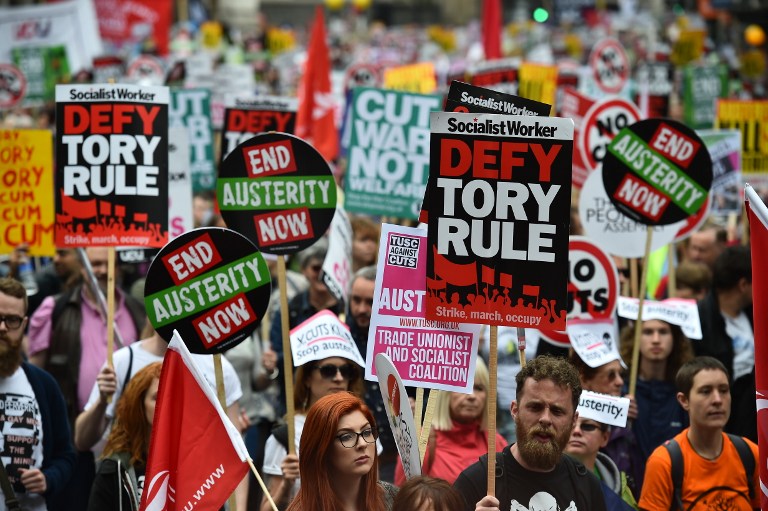The UK’s 2024 Spring Statement has sparked significant discussion, with Chancellor Rachel Reeves assuring no immediate tax hikes and no return to austerity. However, with a downgraded economic growth forecast and rising borrowing costs, the question remains: Can these promises hold?
- 🔹 What is the Spring Statement?
- 🔹 Key Announcements from Chancellor Rachel Reeves
- 🔹 Why No Tax Increases (For Now)?
- 🔹 The Reality of Spending Cuts
- 🔹 Defence vs. Aid: A Shift in Priorities
- 🔹 Economic Growth Downgrade: What It Means
- 🔹 Can the UK Avoid a Return to Austerity?
- 🔹 Market Reactions & Investor Sentiment
- 🔹 Future Tax Rises: Are They Inevitable?
- 🔹The Road Ahead
This article delves into the key takeaways, their implications, and whether the UK can maintain this course in the long run.
🔹 What is the Spring Statement?
The Spring Statement is not an entire Budget but a forecast update provided by the Office for Budget Responsibility (OBR). It outlines economic growth expectations, government borrowing figures, and potential spending adjustments.
Unlike an entire Budget, the Spring Statement generally lacks significant policy changes but gives insights into future decisions.

🔹 Key Announcements from Chancellor Rachel Reeves
In her address, Rachel Reeves emphasized:
✅ No further tax rises – at least for now
✅ £5bn in welfare spending cuts – the largest in a decade
✅ Civil service budget cuts – a 15% reduction in administrative costs
✅ Increased defence spending – shifting funds from foreign aid
✅ No return to austerity – but targeted spending reductions
However, the challenge is balancing these measures without derailing essential public services.
🔹 Why No Tax Increases (For Now)?
One of the biggest surprises is the government’s decision not to raise taxes despite higher borrowing costs. The reasons include:
💠 Maintaining economic stability – Higher taxes could slow growth further
💠 Boosting consumer confidence – Avoiding tax increases keeps spending levels steady
💠 Political strategy – Delaying tax hikes until later could soften voter backlash
However, this could change in the Autumn Budget, especially if growth remains sluggish.

🔹 The Reality of Spending Cuts
While Reeves insists this isn’t “austerity,” several spending cuts will impact services:
🔻 Welfare cuts (£5bn): Reductions in Personal Independence Payments (PIP) and Universal Credit will affect hundreds of thousands.
🔻 Civil service cuts (£2.2bn): A 15% reduction in admin costs, including 10,000 job losses.
🔻 Departmental budget trims: Minor cuts across government agencies.
The challenge will be ensuring these cuts don’t disrupt frontline services.
🔹 Defence vs. Aid: A Shift in Priorities
A significant policy shift is reallocating funds from foreign aid to defence.
🚀 Increased spending on military equipment (jets, tanks, cybersecurity)
📉 Reduced foreign aid contributions
This move aligns with global geopolitical tensions but raises ethical concerns about cutting humanitarian aid.
🔹 Economic Growth Downgrade: What It Means
The OBR’s new forecast projects slower economic growth in 2025, mainly due to:
📉 Higher borrowing costs
📉 Lower-than-expected consumer spending
📉 Global trade uncertainties
A slower economy means less tax revenue, potentially forcing policy changes.
🔹 Can the UK Avoid a Return to Austerity?
While Reeves avoids the “austerity” label, spending reductions could feel similar. However, differences from past austerity measures include:
✔️ No large-scale public sector layoffs
✔️ No deep cuts to frontline services (yet)
✔️ More focus on tax avoidance crackdowns
Nonetheless, if economic conditions worsen, tougher cuts may be inevitable.
🔹 Market Reactions & Investor Sentiment
📈 Government borrowing costs have risen, reflecting investor concerns about future tax hikes.
📉 UK bond yields remain high, mirroring European trends.
💼 Business uncertainty lingers, awaiting clearer trade and industrial policies.
The government must convince investors of its long-term fiscal strategy.
🔹 Future Tax Rises: Are They Inevitable?
While taxes remain unchanged now, future increases are likely:
📌 National Insurance adjustments
📌 Revisiting frozen income tax thresholds
📌 Higher corporate taxes
Autumn’s entire Budget may bring more challenging choices.
🔹The Road Ahead
The Spring Statement 2024 outlines short-term stability, but challenges loom:
🚦 Lower economic growth may force policy shifts
⚖️ Spending cuts vs. tax hikes – a delicate balance
📅 Autumn Budget – the real test of fiscal policy
Tax rises and austerity are off the table for now, but how long will they be?
















